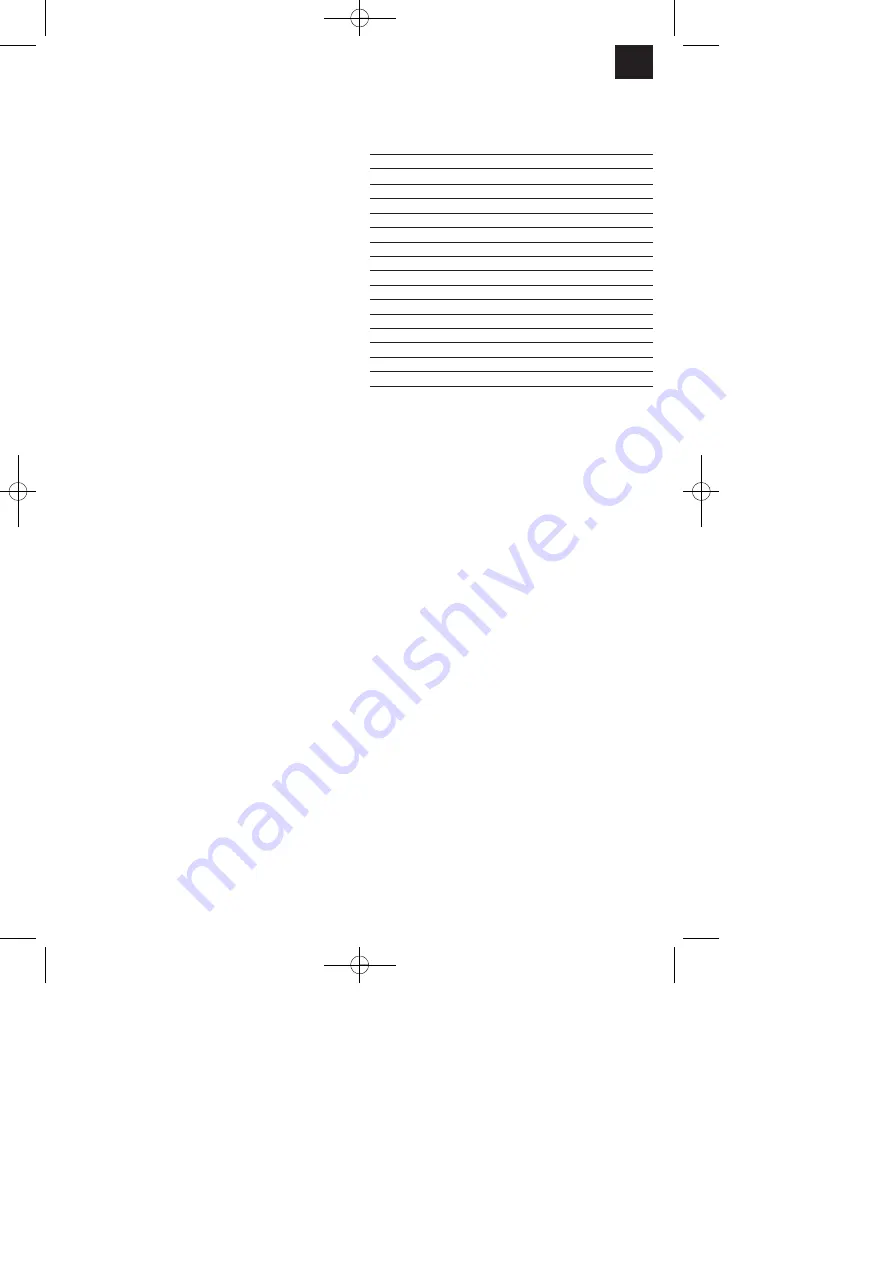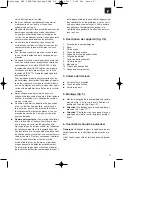
handle will engage in the bayonet lock.
Note:
The bayonet lock must be properly latched
whenever you transport the pressure sprayer.
Also, the spray tube should be in the holder pro-
vided for the purpose (Fig. 1/Item 5).
9. Spraying
앬
Release the pump/carry handle from the bayonet
lock by pressing it down and gently turning it
counterclockwise.
앬
Pressure is built up in the tank by pumping the
pump/carry handle (up and down).
Note:
The pumping process can be facilitated by
removing the spray funnel (Fig. 1/Item 10) from
the storage compartment (bootstrap) and holding
the pressure sprayer on the ground with your
foot.
The tank pressure can be read off the pressure
gauge at any time (Fig. 1/Item 9). The maximum
tank pressure (operating pressure) must not
exceed 3 bar. The overpressure valve (Fig.
1/Item 11) triggers at a positive pressure of
3.2 bar and relieves any pressure exceeding this
amount.
Note:
Using a higher pressure increases spray
atomization, however this also increases the
danger of overspray.
Using a lower pressure leads to larger, heavier
droplets, which then more easily drop onto the
ground (causing unnecessary pollution) and
increase the amount of solution required.
Important:
Always carry the pressure sprayer
upright.
앬
Press the trigger lever (Fig. 1/Item 7) on the
spray gun handle to spray.
앬
The spray jet will stop immediately if you let go of
the trigger.
앬
You can direct the spray precisely at even hard-
to-reach areas by bending the swan-neck (Fig.
2/Item 3) at the joints.
앬
Unscrew the nozzle and the swan-neck (Fig.
2/Item 3) from the spray tube to use the spray
funnel (Fig. 1/Item 10). Then screw the spray
funnel onto the spray tube as shown in Figure 4.
Important:
Release all pressure by pulling the
overpressure valve (Fig. 1/Item 11).
10. Technical data
Maximum fill capacity
5 l
Total volume of tank
7 l
Maximum delivery rate V
max
= 0.45
l/min
Maximum permissible operating pressure
3 bar
Maximum permissible operating temperature + 40 °C
Safety valve/bleed valve
1
Nozzle
hollow taper, 0.7 mm
Nozzle spray angle
max. 60°
Nozzle recoil force
less than 5 N
Net weight
2.8 kg
Residual quantity
0.05 l
Spray pressure
1.5 - 3 bar
Spray quantity
0.3 - 0.45 l/min
Optimal spray pressure
2.0 bar
Optimal spray distance
0.6 m
Spray width at a distance of 0.5 m
0.6 m
Spray quantity at 2 bar
0.35 l/min
Note:
The residual quantity refers to the liquid that
remains in the sprayer when the nozzle starts to leak
air. This liquid cannot be evenly sprayed.
11. Cleaning
After use, clean the unit and leave the sprayer tank
open to dry. Note the cleaning instructions in the
directions for use that came with the chemical in
addition to these cleaning instructions.
Remove any remaining liquid from the tank through
the tankʼs filler opening and store the liquid properly
for subsequent use or dispose of it in accordance
with the applicable regulations.
Perform the following steps to clean the pressure
sprayer:
앬
After the tank has been sprayed empty or after
completely emptying the tank as previously
described, fill the tank with clear water to a level
that amounts to ten times the residual liquid (see
“Technical data”).
앬
Close the tank and forcefully shake the pressure
sprayer several times.
앬
Now spray the contents of the pressure sprayer
on the area you just treated or on an area that
you reserved for this purpose.
앬
Repeat the cleaning process.
앬
The tank can now be drained through the filler
opening.
GB
13
Anleitung NDS 5_SPK7:Anleitung GLDS 5-2 23.03.2007 9:06 Uhr Seite 13














































